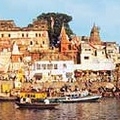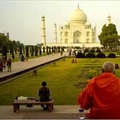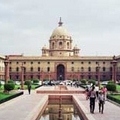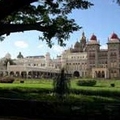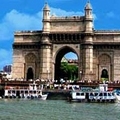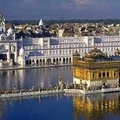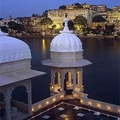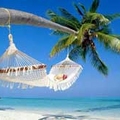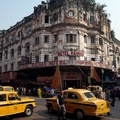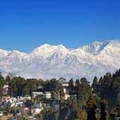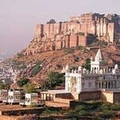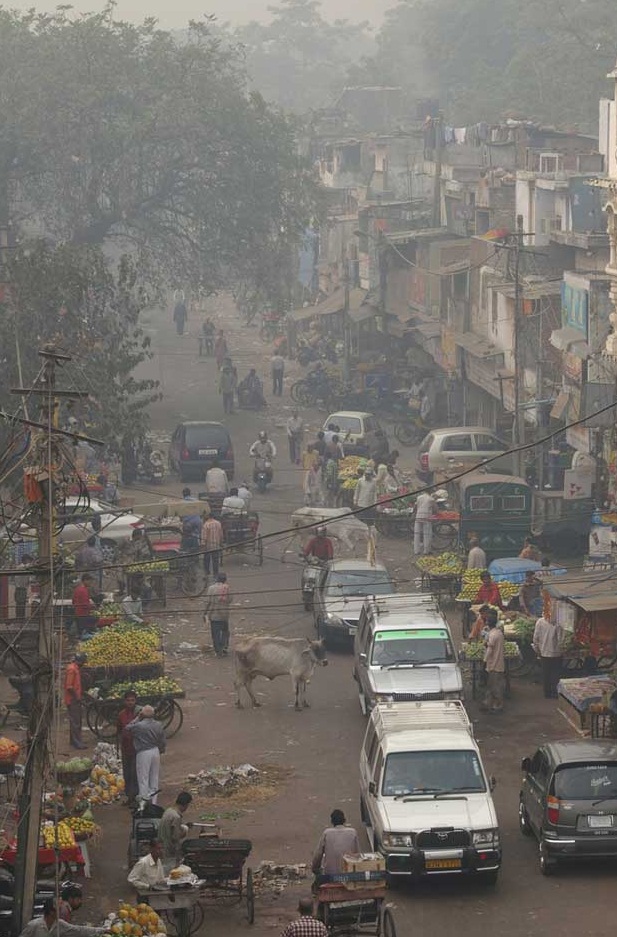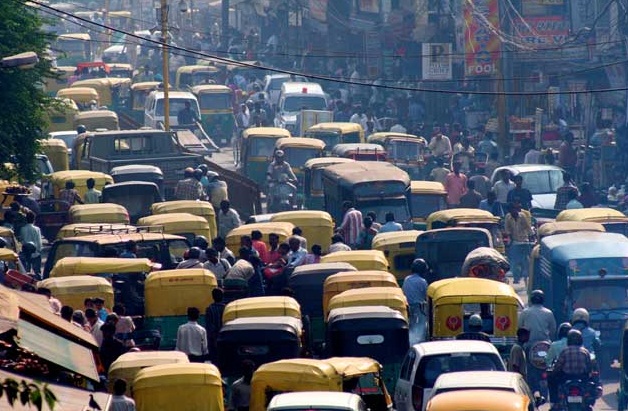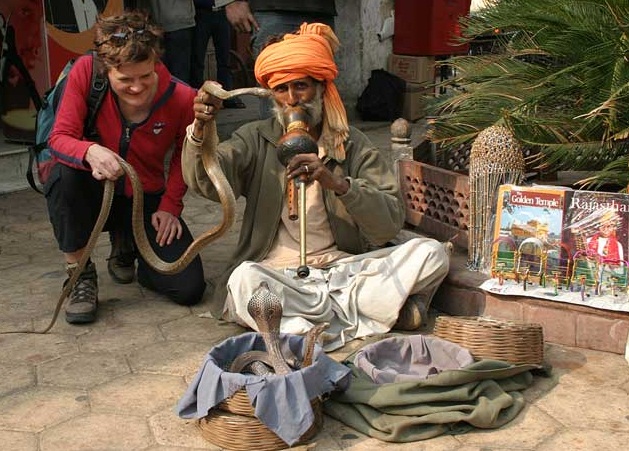Destinations / The Best Cities to Visit in India / Delhi - The Beauty of the Chaos
Delhi - The Beauty of the Chaos
Delhi has not always been the capital of India, but it has always played a key role in India's history due to its location on the way to the West to South-East Asia. The capital of one of the largest countries in the world has a fascinating history, but a population of almost 17 million suffer from high levels of pollution and poverty. Attractions in Delhi are not immediately noticeable. Even the residents themselves, many of whom were born in other regions of the country, seldom show pride in the city, complaining of government officials, aspiring politicians, greedy businessmen, ever-expanding slums (52% of the population live in the slums of Delhi, where there is no water, electricity, the sewerage system, etc), a relatively high crime rate. However, New Delhi largely reflects the essence of modern India, with its visual paradox of old and new, wealth and poverty, noise and safety, technological advances and slums.
General Information
Delhi is the starting point for trips to North India, not only because it is relatively well-developed transport infrastructure, but because the story of one of the oldest cities in the world is, in fact, the history of India. India belongs to the category of countries that once you visited it, you want to live here and then you cannot wait to come back soon. It can change your life for better or for worse, but certainly we can say one thing: no one leaves India cold. It captivates and disappoints, it is surprising and annoying, but always a concern. Everything that you want to do while you're here is to leave soon and everything that you want to do as soon as you are gone is probably go back again there. New Delhi in this case is no exception. For most travelers, familiarity with India starts from Delhi and many from acquaintances are staggering. Tourists meet a noisy, a polluted and a ,chaotic city. For the first time the ancient capital of India can produce an unsightly impression on visitors. Taxis, cows, motorcycles, buses and motorcycles are stuck in endless traffic jams. Pedestrians walk at all easy, because even in some streets there are no sidewalks for pedestrians. Historical monuments coexist with shanties and modern high-rise buildings. Do not rush to draw hasty conclusions.
Give Delhi a chance and you will see that in addition to heart-rending scenes of poverty (tens of thousands of people are homeless Delhi), in addition to the chaos of traffic, often the lack of markings on the roads, in addition to adhering to the tourists at every turn traders and scams in this country there are many beautiful and interesting places. In fact, Delhi is a beautiful city, which is the largest mosque in India and the largest Hindu temple in the world. Delhi gives an understanding of what the rest of India represents. With a population of nearly 17 million people, this is the third largest city of the inhabitants of India after Mumbai and Calcutta , but from the perspective of a busy pace of life, chaos and confusion, the capital of the country probably has no equal. This is the city of the government officials and clerks, which became the center of fashion, media, business, technology and production in India. The origin of its name is uncertain. Some believe that the name comes from the Persian word "dehleez" (translated as "threshold") - it is a fitting symbol of the city, crowded with visitors. Tourists also consider Delhi as doors, which should come in and quickly go to more exotic places to visit: Jaipur , Goa , the Taj Mahal .
Delhi is known for its rich historical heritage and architecture. Starting from the 6th century BC, numerous rulers of empires reigned the city, because it is a multi lingual, multi cultural and political center of India, with many minarets, tombs, palaces, cathedrals, mosques and temples, making it the most visited tourist destination in India. Modern Delhi has the remains of at least seven different cities, from the legendary city of Indraprastha on the banks of river Yamuna, to Shahdzhahanabada, founded in 1638 during the Mughal Empire, which many contemporaries called the Asian Rome. When in 1911 the British decided to move the colonial capital of British Raj from Calcutta to Delhi, they chose a remote location eight kilometers south-west of Shahdzhahanabada. Here, out of nowhere, a group of British architects led by Edwin Lachensom (one of Britain's leading architects of the 20th century) has developed a new political and administrative district in the European style, named New Delhi, the center of government buildings. Born in London, Edwin Lachens, built nearly a century ago New Delhi, a rather controversial figure. Lachens little heed to Indian architecture, including its "cumbersome, poorly coordinated and tedious for the Western mind." When the British decided in 1911 to move to the new colonial capital, Shahdzhahanabad deemed too unhygienic and dangerous place. So Lachens began planning a new city, a remote, as he called it, from the "bad" of Old Delhi. Under the influence occurred in the early XX century, a popular urban concept of the "garden city", Lachens planned a city with spacious lawns, parks, wide boulevards and grand monuments. Imitating Paris, he designed the India Gate, the design of which almost corresponded to the Arc de Triomphe in Paris. The construction of New Delhi was completed in 1931. Scheduled, as a city government officials, like Canberra or Brasilia, a growing population of residents has increased many times over. Two important events radically changed the nature of New Delhi. The first of these occurred in 1947, the section of the country. With the split of India into two parts, a large number of Muslims left the capital city and migrated to the new state of Pakistan. In turn, tens of thousands of Hindus and Sikhs fled from Punjab to Delhi changing its demographic structure overnight. The capital for decades remained mostly populated by people of Punjab and the biggest irony is that the descendants of the builders of many ancient Muslim monuments no longer live in Delhi. Shahdzhahanabad, the center of Muslim culture in India, famous for its poets, philosophers and artists is now inhabited mostly by Indians. The majority of Muslims migrated to Pakistan during the partition of the country, there was only a small community in Old Delhi, which continues to maintain its traditions here. Currently, only about 10% of residents are Muslim and this community is steadily declining. Hinduism is the religion of 80% of the population of Delhi. Hindi is the main spoken language, while English is the written language of the city. The second event did not cause so much disaster, but there has been a noticeable impact. In 1991 the Indian economy has opened its doors to the flow of foreign investment. The world-famous companies have established businesses in the vicinity of the capital. In Delhi in search of people flocked all the Indian states: entrepreneurs, skilled workers, illiterate peasants, between 1991 and 2001 the number of the city's population grew by 5 million people. It became one of the fastest growing cities in the world. By 2015, New Delhi, was expected to be the third largest agglomerate city in the world after Tokyo and Mumbai (currently the eight largest city in the world). The economic development over the past two decades, significantly transformed the city. Visited once the Indian capital and re-visited the tourist celebrates its unprecedented development. This technological progress and rapid economic growth continues to be accompanied with chronic poverty. Of greatest interest to the tourists are the Old and New Delhi. New Delhi has a more modern way of life, traditions, British architecture, well-planned landscapes, parks, shopping centers, wide boulevards and business centers. In contrast, Old Delhi still exudes an aura of antiquity and charm of a bygone era of the Mughal Empire in the centuries-old bazaars, historical monuments, forts, narrow streets, kitchen Maglaj. Major tourist attractions are mainly located in Old Delhi, some of them in New Delhi, including the famous India Gate, Rashtrapati Bhavan, Qutb Minar, the tomb of Mughal emperors, Jantar Mantar Observatory.
The City of snake charmers
Delhi sometimes referred to as "the city of snake charmers." The Indian cobra is deeply revered reptile in India, it is treated with pious awe. She holds a special place in Hindu mythology, she is worshiped during the Hindu festival of Nag Panchami. Agility, which charmers treated with deadly cobras and vipers, forcing them to dance to the tune of flutes pumpkin, always aroused great interest among tourists in Delhi. The caster usually picks up a snake while playing in front of him a long flute. The snake gets up and starts dancing to the music. But, according to herpetologists, snakes cannot hear sounds in the same frequency range as they are perceived by people. Perceived by many dancing to the music, in fact, is a reaction to the movement of snakes flute. Once on the streets of Delhi could be seen a lot of snake charmers. Unfortunately, such scenes are less and less every year. Being the symbol of Indian culture, snake charmers now fight for survival. Their number is steadily decreasing due to the adopted strict laws to protect wildlife and tough initiatives activists animal rights organizations.
Others The Best Cities to Visit in India .
Others from The Best Cities to Visit in India
You can stay at different hotels and chalets in India, which are available in abundance.
You can even opt for holiday rentals apartments which can be found in all towns.
There are various holiday villas in many cities to promote tourism.
Here, we present the top cities with landmark tourist spots as well.
Geographical position India is a country in South Asia.
India is the 7th place in the hierarchy of countries by area, second only to the number of inhabitants and democracy to most people.
Neighborhood India has a coastline with a length of seven thousand kilometers and the western border with Pakistan, Nepal, China, Bhutan and Bangladesh in the northeast and Mynmar in the east.
In the Indian Ocean, it is adjacent to Sri Lanka, Maldives and Indonesia.
The Relief India has three natural regions: the region of high mountains, Indo-Ganges Plain and the Deccan Plateau.
The region of high mountains in the north and northeast of the country comprises most of the Karakorum Mountains and part of the Himalaya Mountains.
High mountains covered with snow are persistent, there are many glaciers which are strongly fragmented by rivers.
Indo-Ganges is an alluvial plain, low and smooth.
The landscape is formed from the large Indian peninsular Deccan Plateau with sharp edges which are based on coastal plains.
The most important river of India is the Ganges.
Climate The climate of India is tropical monsoon with different shades, depending on the altitude and the available relief.
In the Northeast and in some areas protected from the wind very little precipitation falls on the Deccan Plateau, western slopes of Western Ghat region at the foot of Himalaya receive a large amount of precipitation.
Tourism Home of the Hindu civilization of the valley, the center of trade routes and vast empires, India has played a major role in the human history.
Brahmanism, Hinduism, Sikhism, Buddhism and janismul originated in India, while Islam and Christianity enjoy a rich tradition here.
Colonized as part of the British Empire in the nineteenth century, India gained independence in 1947 as a unified nation after sustained effort made in this direction.
Population, creatures,the geographical and climate system are among the most diverse in the world.
You may also remember that India is the home of pepper.

